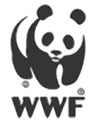Conservationists killed in Nepal helicopter crash
Conservationists killed in Nepal helicopter crash
mongabay.com
September 25, 2006

|
24 people were killed in a helicopter crash in Nepal on Saturday September 23rd. Seven of the victims were staff members of WWF, a leading conservation group. The helicopter was carrying them from a conservation site at Ghunsa, in the remote eastern mountains of Nepal, according to WWF.
Also on board were high-ranking government officials from Nepal, representatives of agencies including USAID, journalists and four Russian and Nepali crew members. There were no survivors.
“I am deeply saddened to inform you of a significant loss within the WWF family,” said Carter S. Roberts, President & CEO of WWF. “Early this morning, we received word from our office in Nepal that seven WWF staff members along with important partners in our conservation work appear to have died in a helicopter crash in Nepal. If confirmed, this tragic event marks the single greatest loss of life in WWF’s 45-year history.”
The passengers had just attended an event marking the handover of the Kanchenjunga Conservation Area to local community management. After two days of searching — poor weather conditions, reduced visibility, rough terrain and the remote location hampered the search effort — The helicopter crash site was found just 1.5 miles from the Ghunsa village.
The Kanchenjunga Conservation Area which borders Sikkim in India, the Tibetan Autonomous Region of China and eastern Nepal is home to Kanchenjunga, the third highest mountain in the world. The region supports snow leopard, red panda, musk deer, and the Himalayan black bear and is known for its ethnic diversity and rich cultural heritage. Nevertheless, it is estimated that roughly 75% of the households in the area face food scarcity every year.
Related: Dr. Clive Marsh, visionary for the protection forests of Southeast Asia, dies of encephalitis
This article uses information and quotes from WWF.